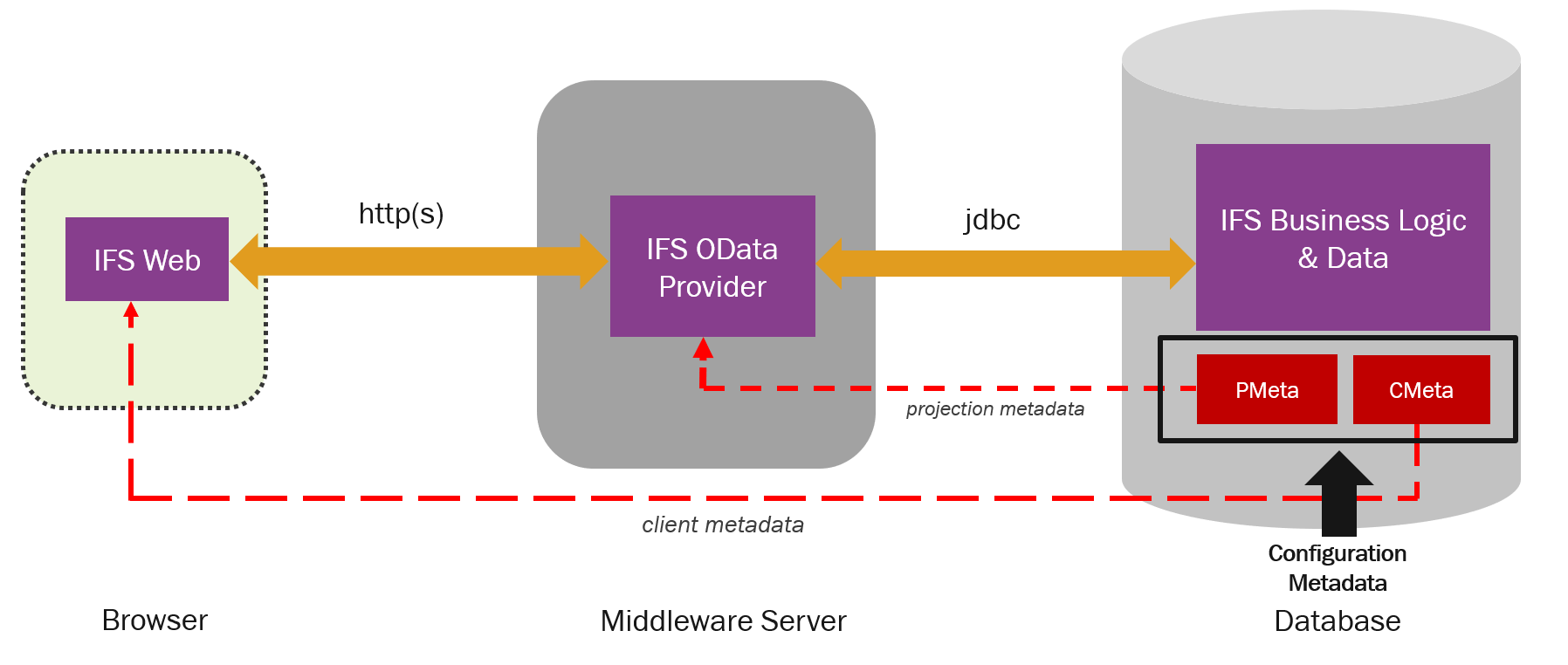Technical Details¶
System Parameters¶
| Parameter Name | Description |
|---|---|
| Custom Field framework | Use this parameter to enable or disable custom attributes functionality system wide. If this parameter is set to OFF no custom attribute will be available in any page. Also note, that related concepts that build upon custom attributes will also be disabled. |
| Tablespace for Custom tables | Tablespace where tables generated for Custom Objects should be created. |
| Tablespace for Custom indexes | Tablespace where indexes generated for Custom Objects should be created. |
| Tablespace for Custom LOB’s | Tablespace where Custom Objects, Large Objects should be stored. Default values for the Custom Objects tablespace parameters are the same as the application installation. The administrator should change these values if there is a need to separate custom and application storage. |
IFS Aurena Configuration Architecture¶
When publishing a custom attribute configuration several new database objects are created, which shadow the original objects.
- A table for persistent data, which is named [Entit Name] suffixed with _CFT or _CLT for custom attributes and custom entities. It has ROWKEY as its primary key. ROWKEY is a persistent Alternative Key that can be used to connect entities and that is how the _CFT table and the standard Entities table are connected. It is required that a Entity has a ROWKEY column or it can not be extended. The ROWKEY value is an Oracle GUID, i.e., a random 32 character string like
24DE63531ACB492685897482934EB7F2that is unique. The master table and the custom table has a constraint that removes the custom record if the master record is deleted. - A package for standard operations, which is named [Entity Name] suffixed with _CFP, _ICP or _CLP for custom attributes and custom logical entities respectively.
- Custom attribute views, called [ViewName] suffixed with _CFV, _ICV or _CLV for custom attributes and custom entities respectively. When publishing, a shadow view for the default view is created. It is also possible to shadow other detail views used on pages that don't use the default view.
Runtime¶
In runtime, Framework will check if the Configurations need to be injected to the metadata. If its required to be injected then the framework will plug configuration data in to the projection metadata.
Meta Data¶
The configurations are stored in the metadata. The meta data is also fetched to the client in runtime where it is used by the framework to handle custom attributes. The meta data fetched in runtime is cached. If the administrator is making changes to the configuration while users are working, the cache needs to be manually refreshed to get the new configurations.
Client Configuration Architecture¶
In the IFS Aurena Client framework, metadata related to Configurations will be injected into the Projection metadata. There are placeholders maintained in the metadata so that when required the Configurations can be easily plugged in. At this point, the Client or Odata provider is not aware of the configurations because a Projection is configured by changing the service.
In the case of custom attributes, the configurations will be automatically fetched from the entity. Using the IFS Aurena Client Page Designer you can then change the layout to make the attributes visible in the IFS Aurena Client page. Note: The Page Designer does not differentiate between standard attributes and custom attributes in the runtime. The Page Designer retrieves attributes from the client metadata and since custom attributes are also injected to the metadata it will treat all attributes equally.

IFS Aurena Client Architechture with custom configurations
Limitations¶
Custom Objects works on a large majority of the pages in IFS Applications, but not everywhere. Custom objects require that the implementation of pages and their underlying storage conform to certain common patterns. Architectural decisions taken when implementing a page can make it impossible to associate a custom object with it.
For more information, see known Limitations.